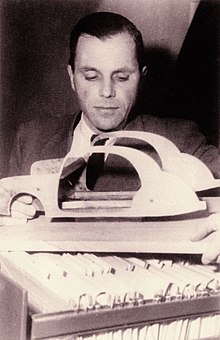Design
**1. Design Process:**
– Designing involves a sequence of activities to produce a design, which can be a brief or lengthy process involving research, negotiation, and modeling.
– The design process can be done by more people than just recognized designers.
– Two dominant views of the design process are problem-solving and reflection-in-action.
– The rational model, developed by Herbert A. Simon, Gerhard Pahl, and Wolfgang Beitz, optimizes a candidate for known constraints and objectives through discrete stages.
– Design process stages include presentation of designs, design during production, development and improvement of a design, product testing through in situ testing, and post-production design feedback for future designs.
**2. Design History and Education:**
– Design history study is complex and may include pre-industrial objects in narratives.
– Design education institutions date back to the 19th century and cover theory, knowledge, and values in various design areas.
– Early influential design historians include Nikolaus Pevsner and Sigfried Giedion.
– Modern design education was greatly influenced by Bauhaus.
– Design education prepares students for professional design practice and emphasizes designerly ways of knowing and acting.
**3. Philosophies and Approaches to Design:**
– Informal philosophies guide design based on personal values or preferred approaches.
– Critical design critiques existing values, morals, and practices.
– Ecological design prioritizes environmental impacts over the lifecycle.
– Participatory design involves collective creativity and stakeholder involvement.
– User-centered design focuses on end-users’ needs and limitations.
**4. Relationship with the Arts and Design Paradigms:**
– Blurry boundaries exist between art and design, with distinctions based on context and trade.
– Different paradigms describe design activity, exploring the co-evolution of problem-solution in the design process.
– Studies have been conducted in design thinking and software design theories.
– The book ‘The Design of Design’ delves into essays from a computer scientist.
**5. Impact and Future Trends in Design:**
– Design plays a crucial role in shaping user experience, consumer behavior, and brand perception.
– Well-designed products often have higher market demand.
– Design principles include balance, contrast, emphasis, rhythm, and unity, guiding visually appealing compositions.
– Design has evolved over centuries in response to cultural, technological, and societal changes.
– Future trends in design include augmented reality, virtual reality, user-centered design approaches, data-driven design, minimalist aesthetics, and cross-disciplinary collaborations.
This article has multiple issues. Please help improve it or discuss these issues on the talk page. (Learn how and when to remove these template messages)
|
A design is a concept of or proposal for an object, a process, or a system. Design refers to something that is or has been intentionally created by a thinking agent, though it is sometimes used to refer to the nature of something – its design. The verb to design expresses the process of developing a design. In some cases, the direct construction of an object without an explicit prior plan may also be considered to be a design (such as in some artwork and craftwork). A design is expected to have a purpose within a certain context, usually has to satisfy certain goals and constraints, and to take into account aesthetic, functional, economic, environmental or socio-political considerations. Typical examples of designs include architectural and engineering drawings, circuit diagrams, sewing patterns and less tangible artefacts such as business process models.





